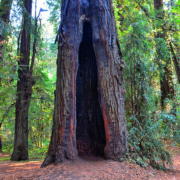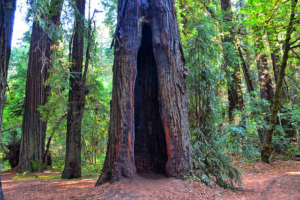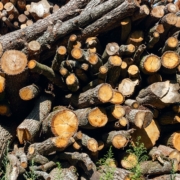How Forests Become More Fire-Resistant With Age
How Forests Become More Fire-Resistant With Age
Conventional wisdom says that forests should become more flammable with age, and easier to burn, since they have so much more burn-able surface area and can provide so much more fuel for a fire. However, an Australian botanist named Philip Zylstrom has discovered some very interesting facts which support the opposite conclusion.
Since his study was conducted on virtually every forest fire which has occurred over the past several decades in the Australian Alps National Forest, his conclusions carry considerable weight. In essence, his research indicates that after a forest has re-grown following a wildfire, and has had two or three decades to recover, it actually becomes one of the best defenses against future fires.
Fire and forest re-growth
The exhaustive research performed by Mr. Zylstrom actually corroborated almost all other research done on forest land after fires, in that for several years after such a fire, the affected area was far more prone to follow-up fires and more destruction. That is the point where virtually all prior research was dropped, i.e. within two or three years following a major forest fire. Zylstrom’s research though, continued well after those years, taking in the entire post-fire history of forests within the Australian Alps National Forest.
In every single case examined by Zylstrom, going back 58 years into the historical records of these forests, he found that after a burned forest had the chance to recover for between 14 and 28 years, it was much more resistant to another fire than it had been originally. It was also found to be more fire-resistant than neighboring forests which had never been burned, and never had the chance to re-grow.
The case of the ash
One particular example which impressed Zylstrom were the ash forests contained within the Australian Alps. After suffering a devastating forest fire, they usually recovered quickly, with a whole body of fresh growth and new saplings to re-populate a stricken area. For several years, all that new growth would be powerfully impacted by any new wildfire blowing through the region, and it did indeed become much more susceptible to successive fires.
However, once those ash forests had time to grow substantially, they became tall enough to avoid igniting in anything but a raging fire. Then too, the stands of trees had become thinned out enough so that they did not offer such an inviting target to wind-blown fires. For many other kinds of forests, the same model holds true – greater susceptibility to fires within a few years of a big burn, but greater resistance once the re-forested trees were given a chance to rise above potential ignition points, and to thin out and avoid the tight packing which fuels fires.
What all this means is that steps can be taken to provide extra protection for old-growth forests, since they are less likely to burn, and offer an increased level of resistance to the possibility of being consumed in a raging forest fire.
Nature’s Packaging is committed to wood packaging sustainability and forest health is an essential component. Regularly thinning the smaller trees from forests helps prevent forest fires. The wood packaging industry makes it possible for land owners to recoup those maintenance costs as it provides a valuable outlet for the smaller logs.
Healthy Forests Healthy Communities: https://youtu.be/xliGzm6jz_g
Contrary to common belief, some forests get more fire-resistant with age: https://phys.org/news/2018-04-contrary-common-belief-forests-fire-resistant.html







